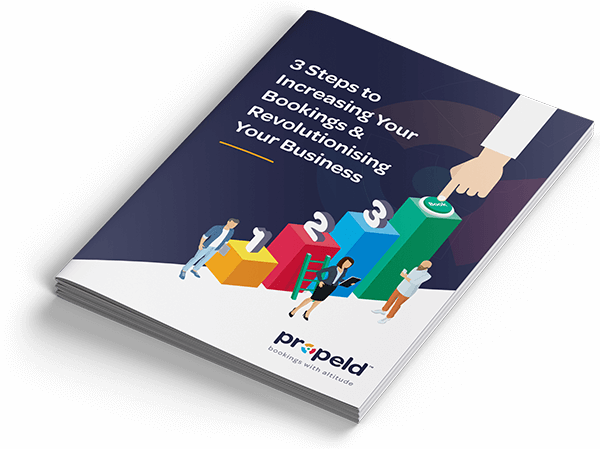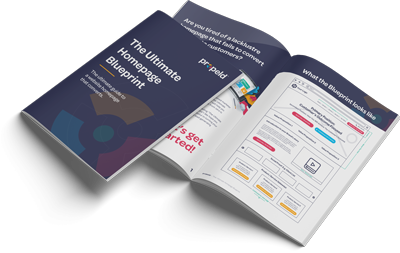I always find it funny when I ask a client who their ideal customer is because quite often, they’ll give me one of these answers:
- Everyone, we don’t want anyone to feel like we don’t cater for them; or
- Single, Couple, Families, Groups, Corporates, and the list goes.
The problem with these two answers is that it gives me the impression that their business has no uniqueness. And in order to appeal to everyone and anyone they have to present themselves in a generic/vanilla way to the market so that they don’t put off any potential customers.
The problem with generic/vanilla marketing is that whilst it won’t detract anyone from booking with you, it also won’t win you any new customers either.
And when you factor in the structure of OTA sites, you can probably begin to see why it is so important to make your business stand out from the pack of lookalike competitors. Put simply, as Seth Godin says, “everyone is not your customer”, and as long as you think to the contrary your business will not steal bookings from competitors, or the OTAs. In this article, we’ll explore ways you can:
- Identify who your target audience is.
- Find where they are online.
- Explain why you are the best fit for their travel needs.
- Craft messaging to attract and engage with your target audience.
Identify who your target audience is.
The first step to understanding and identifying your tourism target audience is to look at your existing clients. You’ll want to consider the following questions when looking at your customer list:
- Who are your main revenue generators?
- Who acts as a brand ambassador that leave positive reviews and share with their social networks?
- Who continues to come back on a regular basis?
- Who makes you feel like turning up to work every day, and makes you love what you do?
The answers to these questions will help you build a profile of your ideal customer. It doesn’t have to be just one specific type of client; you might have a couple of different ideal client profiles. But what you don’t want is to end up creating a list of ideal clients which is practically everyone, which is the opposite of what we are trying to achieve.
Some examples of a different type of profiles you could come up with include:
- Families
- Grey Nomads
- Cashed Up Baby Boomer
- International Visitors
- Couples
Brainstorm your ideal customer personas.
Now that you have a fair idea of the type of customer you want to try and target you can build out a profile, or persona, of who they are. The personas allow you to brainstorm characteristics, buying behaviours and travel preferences to get an understanding of what things impact their decision to book an accommodation provider or travel experience. Here are the things you need to consider when fleshing out your personas:
- Type of traveller (families, couple etc.)
- Traveller’s names and ages
- What they look like (include an image that helps you visualise the persona you’re trying to create)
- Where they are travelling from
- When are they looking to travel
- How long will they stay in-destination
- What type of accommodation are they wanting (luxury, budget etc.)
- What experiences are they looking for in-destination (nature, events etc.)
- What things are they interested in (brands, recreational activities, pop culture etc.)
- What are they doing at each stage of the buyer journey
– Dreaming & Discovering
– Comparing & Planning
– Decision Making & Booking
– Onsite Experience
– Advocacy & Sharing
Figure out where they are online.
Once you have documented your customer personas you can begin finding where they are online. Targeting tools on platforms like Facebook, LinkedIn and Google allow you to create well-defined and highly targeted audiences.
Facebook targeting
Facebook offers some of the best targeting tools on the web for finding your ideal customer. As well as being able to target users by their location, age and gender you can also create custom audiences based on:
- Relationship status (married, single, separated etc.)
- Parents (with young, teen or adult children)
- Employment (industry, job titles or employer)
- Birthday month
- Interests (hobbies, shopping behaviour, entertainment etc.)
- Behaviour (manages a Facebook page, owns a particular type of device etc.)
You can use a variety of these criteria to create a well-defined audience. Audiences can be further defined by narrowing audiences by using advanced match tactics with the ‘And also match’ feature available within the Facebook audience targeting tool.
LinkedIn Targeting
When it comes to targeting people in a professional setting LinkedIn offers effective ways to target users. Like Facebook, Linkedin offers you the ability to target users based on their location, age and gender, but it also provides you with advanced targeting criteria based on a user’s employment, including:
- Company name
- Company size
- Company industry
- Job title
- Job seniority
- Job function
- User interests (professional interests, job preferences etc.)
Google Targeting
Google Ads provides you with three ways to target your ideal customer persona.
Audience Targeting
Compared to Facebook & LinkedIn, Google’s audience targeting options are relatively basic. You can target by gender, age and household income as well as being able to target locations and device categories.
Content Targeting
Content targeting allows you to define what topics or types of sites your display ads will be shown on.
Keyword Targeting
Targeting customers by the search terms they use can be done by both a pay per click campaign and also through your website’s content. Targeting keywords with your content on your website stands to offer you a longer-term return on investment but pay per click search campaigns can provide a short term boost to your site’s visitation. Regardless of what channel you use to attract your ideal customer, you need to make sure your content is resonating with them and encouraging them to engage with your business further than just look at the website.
Explain why you are the best fit for their travel needs.
By now you should have a good idea of who your brand’s ideal customer is, what they look like and where you can find them online, the next two steps discuss how you can capture their attention. In order to craft compelling messaging, that attracts your ideal customers you need to understand what your unique selling propositions (USPs) are.
Spend some time thinking about what it is that makes your business a clear choice compared to your competitors and start jotting them down. Here are some questions that will help you formulate your USPs.
- What products/services do we make the most money with?
- What products/services sell out the fastest?
- Where, in the business, have you invested the most of your money and effort into?
Listen to what your customers have to say.
By listening to what your customers have to say you may be able to find unique selling propositions that you were not even aware of. Scan through your online reviews to see if anything sticks out, or ask clients if they would be happy to answer a few questions, like:
- What do they love about what you offer?
- Why do they choose you?
- What would they love to do that you don’t already offer?
Understanding what your customers see as your USPs is valuable insight and should be used to craft your branding and your marketing messages.
Craft messaging that connects with your target audience.
Your messaging has to resonate and connect with your target audience otherwise you might as well keep going with vanilla marketing. By combining your knowledge of ideal client and your business’s unique selling propositions you can begin to formulate messaging sells your business as the best option. Here are 4 simple tips to craft messaging that will attract your ideal customer:
- Research what your competitors are doing.
This is great for inspiration and to get an idea of what you like and don’t like. - Know what you’re trying to achieve.
Make sure you have a clear intention for every piece of content or messaging that you put out there. If you want to get more direct bookings, make sure your messaging is encouraging customers to book direct. - Make your messaging and content easy to understand.
Try not to overcomplicate things by writing in wordy sentences or by using big words. Keep it simple and written in Plain-English so that your messaging can be absorbed with as little effort as possible. - And lastly, make sure you are constantly measuring, testing and reviewing what you’re doing.
The beauty with digital marketing and the ability to target niche audiences is that you can easily experiment and test channels, creative and messaging to see what resonates and what doesn’t.

